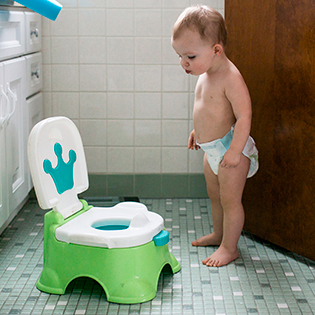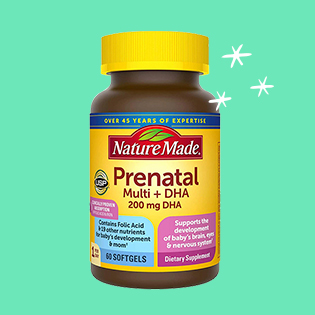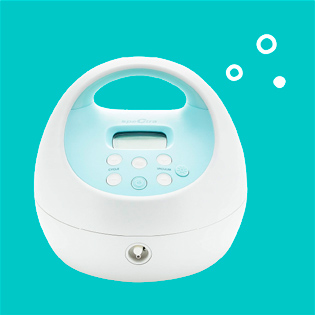Hospital discharge papers for new parents should come with a bright red warning label on top: Warning, sharp learning curve ahead! No matter how much you think you know about babies or how many books you read or siblings you had, nothing compares to the joy and the responsibility of having your own little one to look after.
One of my most vivid memories after my first son was born was when the nurse told us we could go and my husband and I just stared at her.
"So, you’re just going to let us walk out of here with him?" my husband stammered.
"Well, you can’t stay here!" she snapped.
"It seems like there should at least be a test or something we have to pass first," he whispered to me as we put the baby in the car seat (and waited while the nurse fixed the straps).
"I know! I had to pass a produce test before they let me be a cashier at a grocery store in college," I whispered back. "Babies are way more complex than a kumquat … although he does kind of look like a bruised cantaloupe."
Just the fact that I could compare an infant to bad fruit with a straight face meant I was already acclimating to the extreme weirdness of being a new parent. You find yourself doing things you’d never thought you’d do (in public, no less), yelling things you never thought you’d say, wearing things you swore you’d never wear and laughing at things that really shouldn’t be that funny.
Here are just of the few signs that show you’re a new parent:
1. More people have seen your nipples in the past two months than in the entire two decades prior.
Pregnancy and delivery probably already caused you to lose any semblance of modesty you once had. (“Oh hi, new doctor I’ve never met before! Would you like to check my cervix? Everyone else is doing it!”)
Read This Next
But just in case you had any shred of dignity left, learning to nurse a baby, especially if you’re in public, will get rid of that quickly. Even if you’re not nursing, your nipples are now as big as pancakes, hard as rocks and poke through every shirt you own.
2. You have to clean poop off a wall.
You probably think you understand poop — after all you’ve been doing it your whole life. And yet there are so many things no one tells you about baby feces. For starters, newborn poop can be bright yellow and smell vaguely of buttered popcorn (although my best friend thought it was more vanilla yogurt).
Oh, and projectile pooping is a thing that shouldn’t exist and yet totally does. Newborns can have incredibly explosive bowel movements that squirt liquidy poop all over themselves, you (of course) and sometimes even far enough to coat that nursery wall you so lovingly stenciled for hours.
By the way, this doesn’t go away after they're newborns. Just wait until your toddler discovers he can take off his own diaper and use it as fingerpaint during a naptime when you were the only one actually sleeping.
3. You find cookie crumbs in your bra. And eat them.
It’s only natural you want to hold your little one closely snuggled up to your chest as often as possible. But there will come a time when you need to eat something and you don’t want to put them down.
I found myself snacking on whatever I could grab with one hand — usually something highly nutritious like tortilla chips or cookies — and eating it over my baby’s head. (I once actually thought my son had fleas because he was covered in little black specks of Oreo crumbs.) No worries about forgetting what you ate though because your newly enormous rack will catch everything.
4. You call the doctor in a panic at 2 a.m. only to be told your baby has a bad case of the boogers.
Pediatricians get middle-of-the-night calls from new parents all the time, like when I was sure my son had RSV-induced pneumonia and was dying. What did the ER doc say? My baby just had a lot of boogers and hadn’t yet acquired the manual dexterity needed to pick his nose. Nose picking, it turns out, is a serious life skill.
5. You pack more for a trip to the grocery store than you did that time you backpacked Europe.
"Diaper bag" is a serious misnomer. That Mary Poppins-esque tote has to carry way more than diapers. In fact, it’s basically a mobile nursery. That you carry on your shoulder. Which you balance out by carrying the equally heavy car seat on the other arm. And now you’re an inch shorter, congrats!
But there’s nothing more satisfying than having someone say "Oh, I think your baby barfed" and being able to pull out not just a burp rag but also a package of wipes, a matching outfit, clean socks and a pacifier. Boy Scouts have nothing on new parents when it comes to preparedness!
6. You are crying and cursing … over a car seat.
There are oh-so-many things that can send a new parent into tears but perhaps there is nothing that tests your parenting mettle more than the crucible of the car seat. First you have to buy the right one. Then you have to figure out how to install it properly, a feat requiring a level, 17 straps and instructions with no words.
But you’re not done yet! Lastly you have to figure out how to properly buckle your baby into said car seat. It’s enough to make a new parent stick to walking … if only you can figure out how to attach the car seat to the convertible stroller.
7. You go to work with the world’s tiniest sock stuck to your pants.
How are babies feet so little? How do factories even make socks so little? How do you keep such tiny socks on those tiny, slippery feet for more than three seconds? And how are you supposed to keep track of all those little socks anyhow?
So many questions. But don’t worry, you’ll find that pink, lacy sock that’s been missing for a week … when your coworker points out it has static-clung to your black slacks.
8. You smash a spider with your bare hands.
Whatever your definition of “too gross to deal with” was before you had a baby, it’s changed now. Once you’ve had another human throw up in your mouth (pro tip: don’t hold the baby over your head right after feeding!), there isn’t anything you can’t handle.
I have, in no particular order, smashed a large spider crawling toward my baby with my bare hand, sucked a Lego out of a toddler’s nose with my mouth, caught vomit with my shirt hem and picked up more “brown boats” out of the bathtub than I care to think about.
9. You fall asleep sitting up on the toilet.
There’s tired. And then there’s new-parent tired. My second son had colic so severe that we joked that if he was breathing he was crying. This meant that in addition to losing our everloving minds, no one was getting much sleep in our house.
Sometimes I would have waking dreams about sleeping. But nothing beats the time my husband walking into the bathroom to find me pants down, slumped over the toilet paper holder, passed out asleep. To this day, I always buy the softest, fuzziest bathmats just in case I ever need a crash pad again.
10. You have very strong opinions about fruit puree.
Parenthood will make you discover that you have extremely passionate opinions about things you didn’t even know existed six months ago. I once had a meltdown because the store didn’t have pureed apricots. I called my sister in hysterics, completely paralyzed by indecision.
Peaches were too high in sugar! Bananas would constipate my baby! Spinach puree looks like poop — why do they even make spinach puree? Does anyone buy spinach puree? Will my baby be doomed to be a picky eater if I don’t buy spinach puree? In hindsight, that probably had more to do with the lack of sleep thing mentioned above than the actual baby food.











































 Trending On What to Expect
Trending On What to Expect





